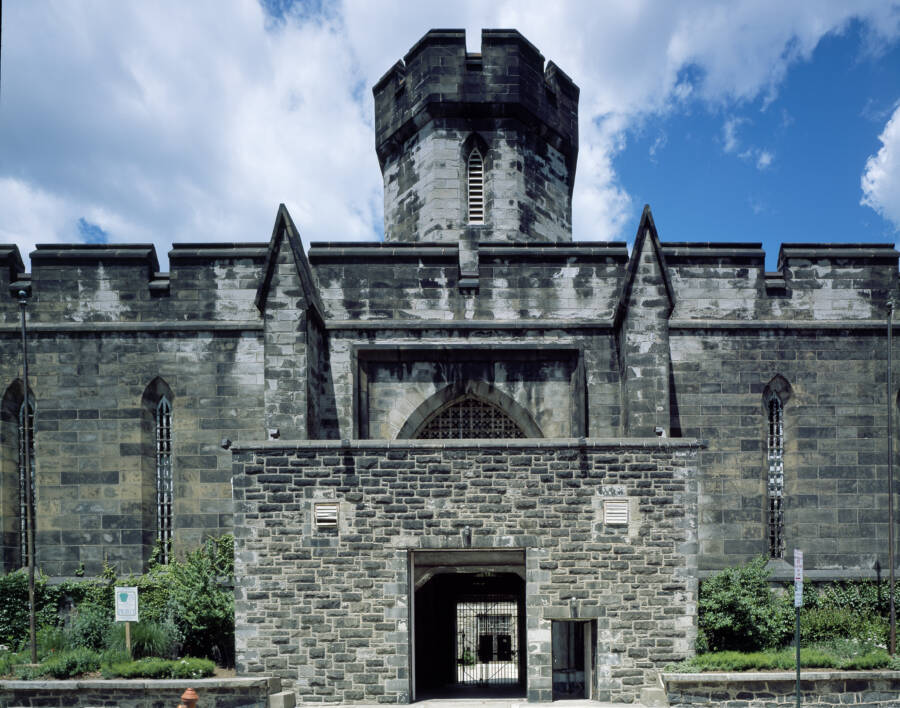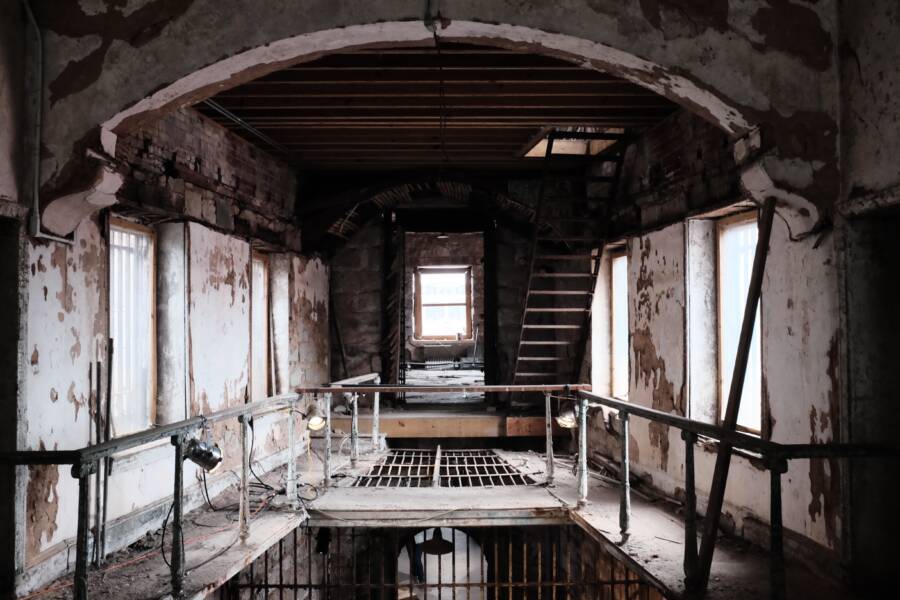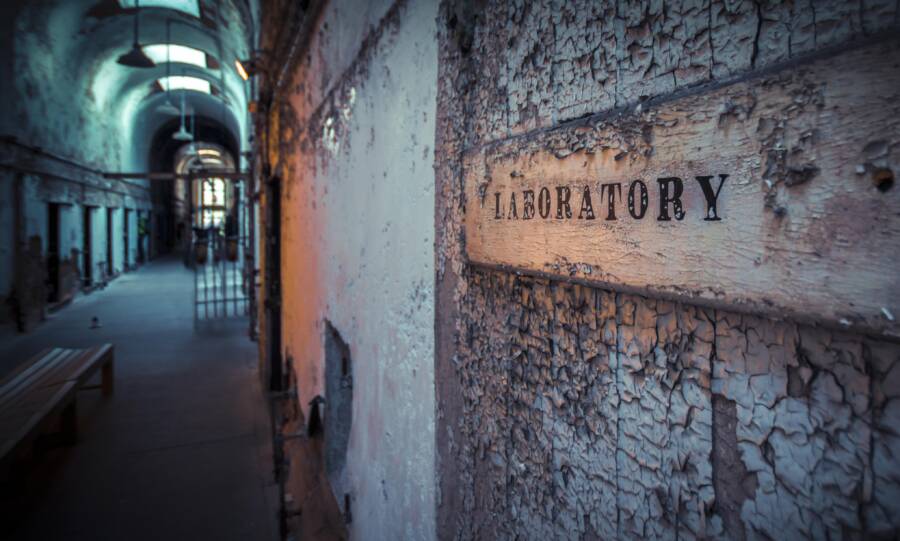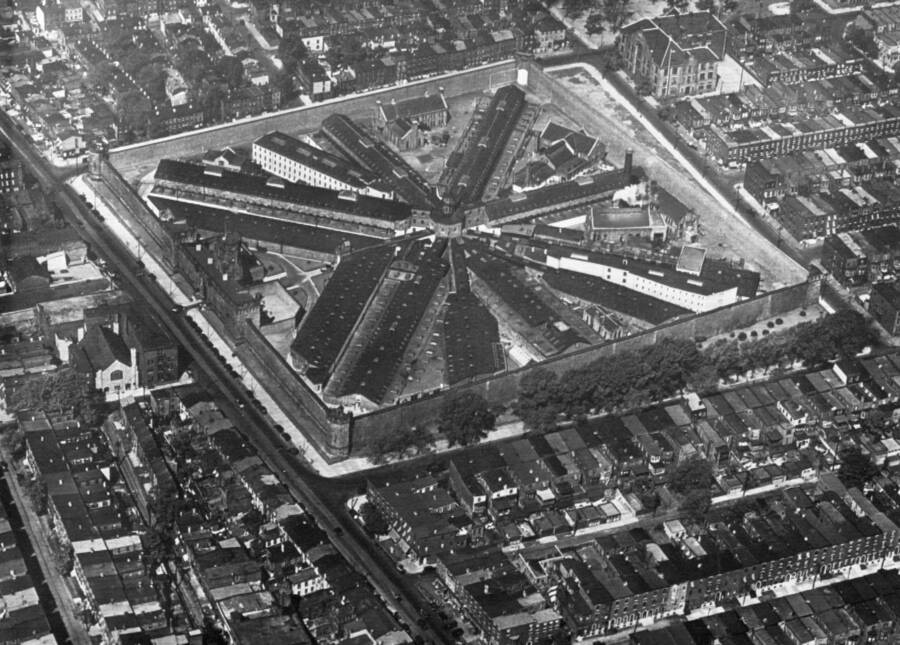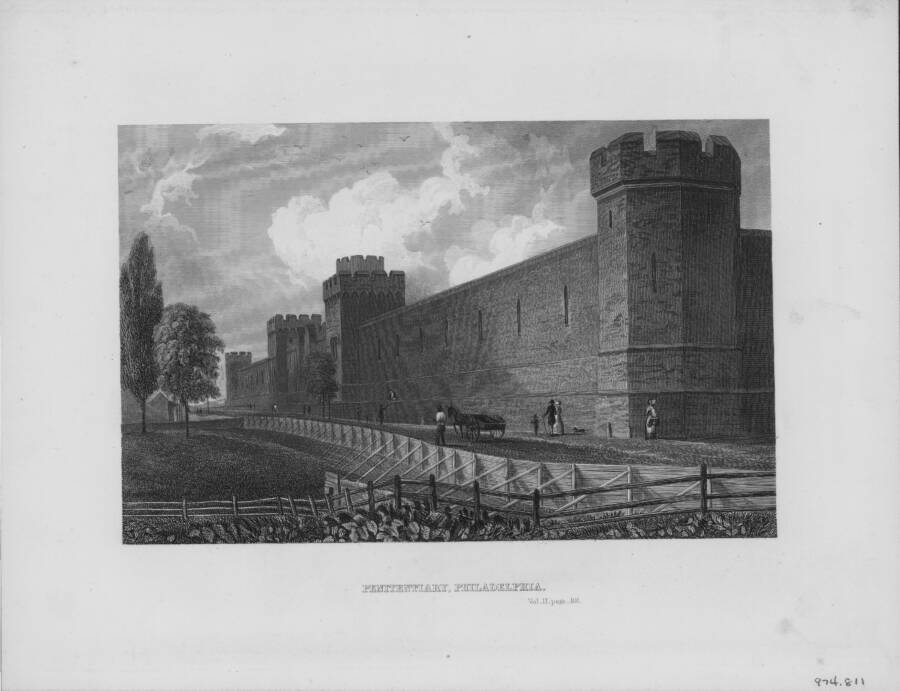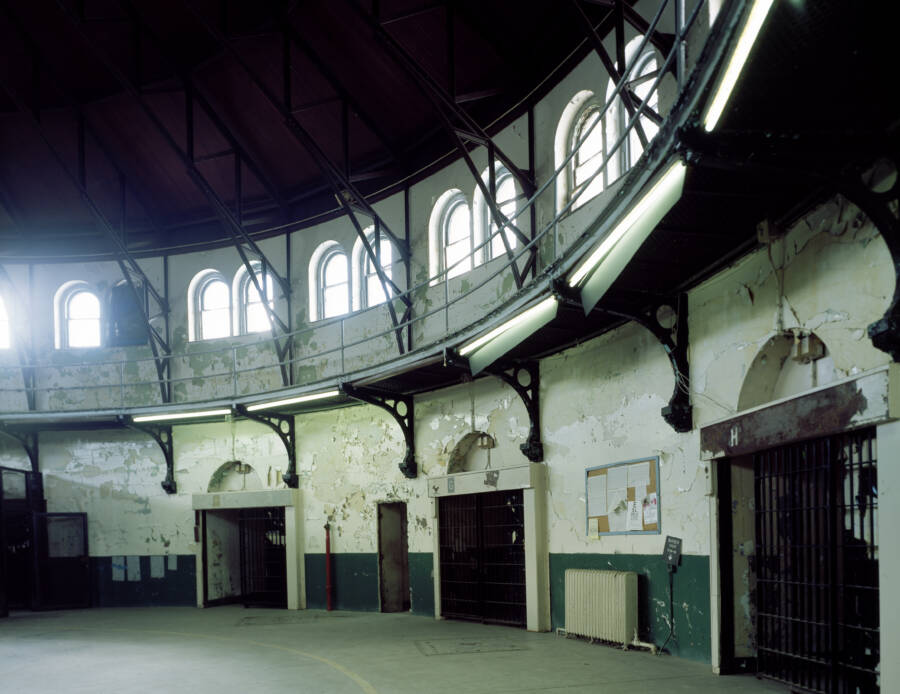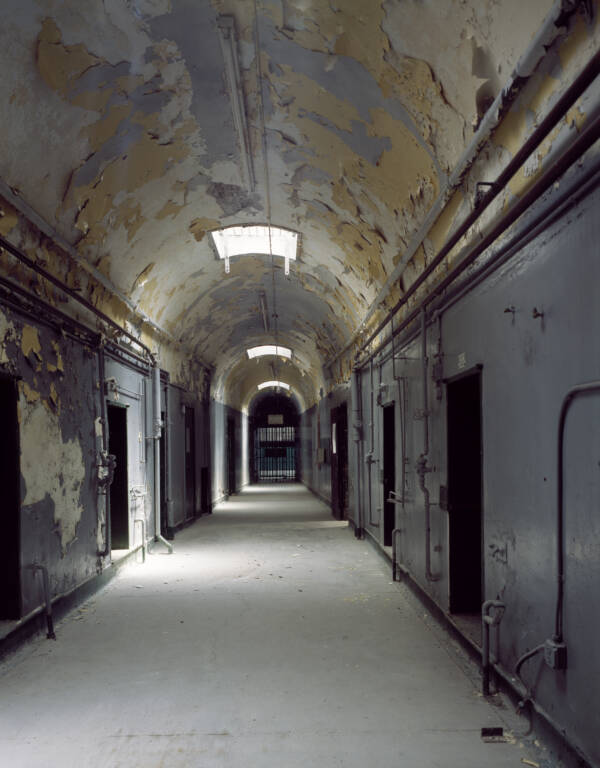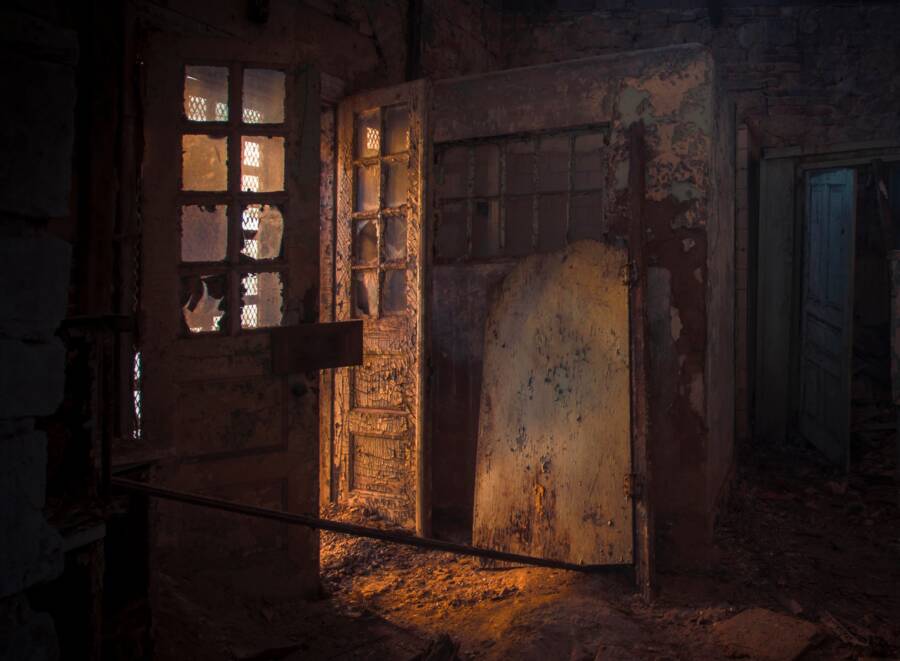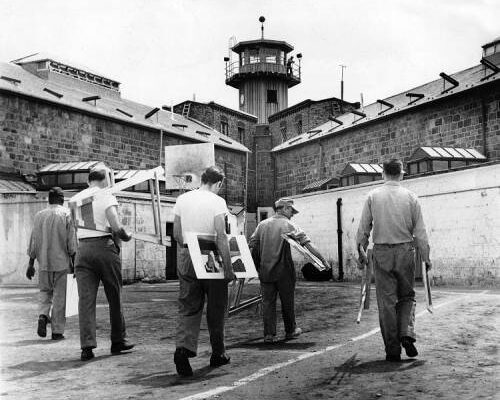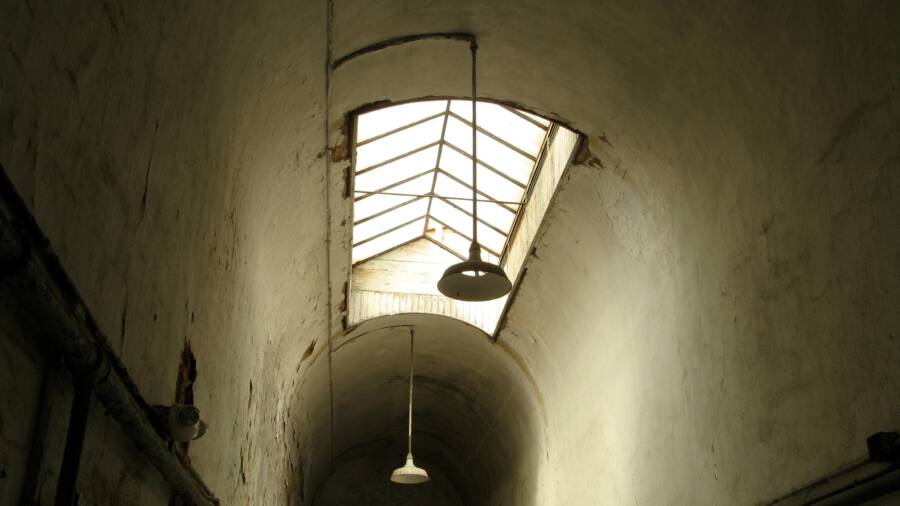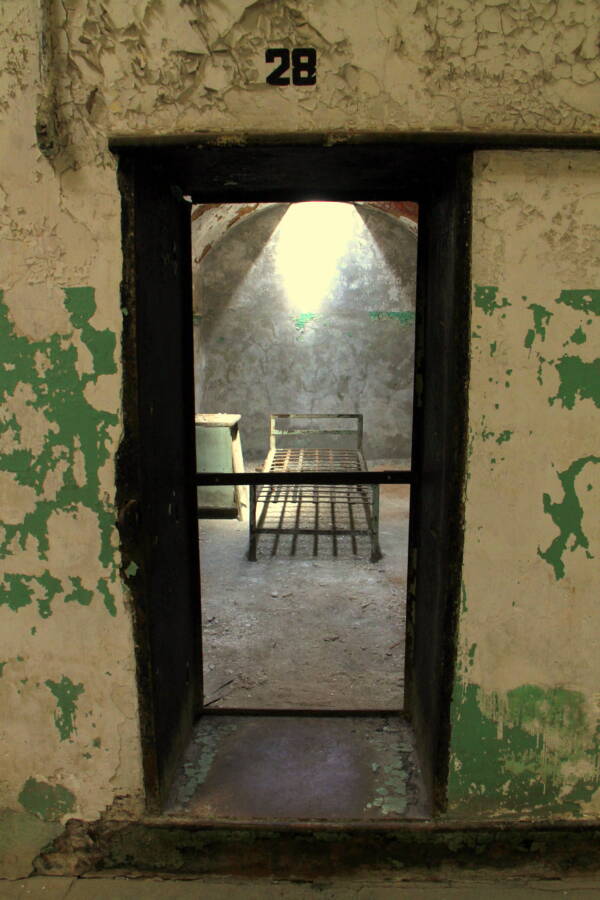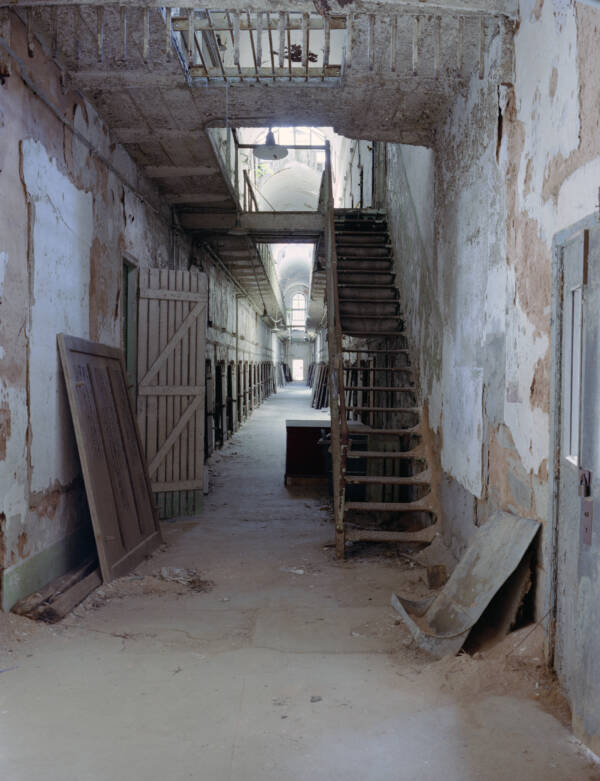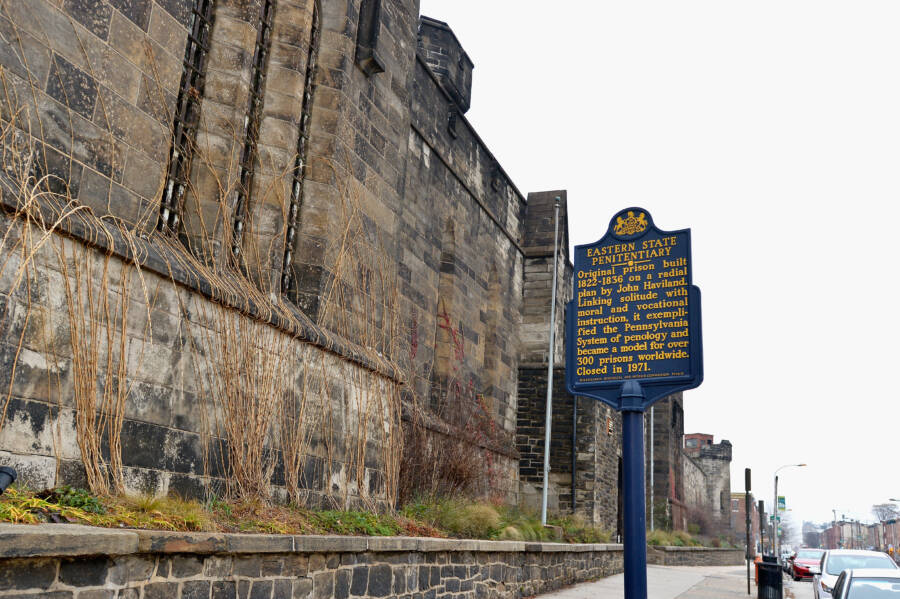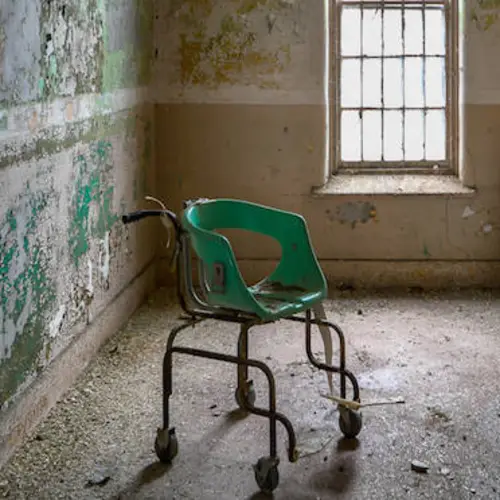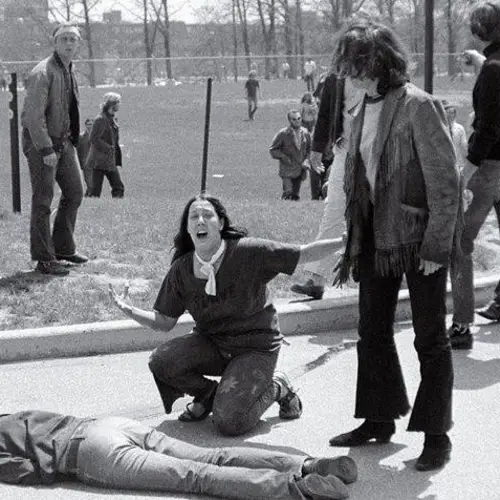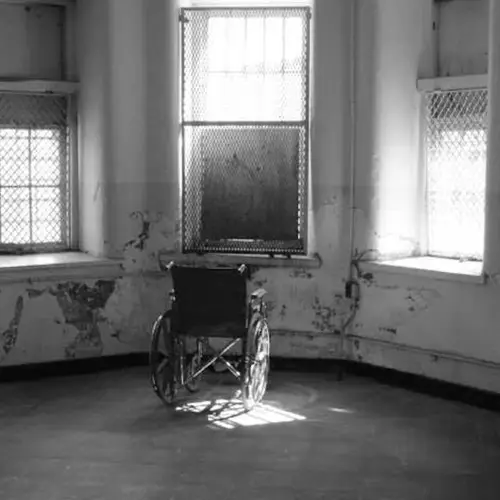When it was first built in 1821, the Eastern State Penitentiary stood as the future in prison reform. Now, the fortress stands in decay.
From 1829 to 1971, the Eastern State Penitentiary operated as one of the most famous and most expensive prisons in history. The Penitentiary held such criminals as Al "Scarface" Capone and bank robber "Slick" Willie.
But the prison wasn't just known for its towering spires and its resume of inmates; the Eastern State Penitentiary was notable because it was supposed to be the first true prison to inspire penance in criminals.
Unfortunately, it fell gruesomely short of this aspiration.
Guards invented their own medieval practices, like "mad chairs" and an iron gag, and the prison that was designed to inspire atonement begat madness. Cells that were crafted for individuals were filled with multiple inmates and overcrowding soon spelled the deterioration of the prison itself.
Needless to say, the Eastern State Penitentiary devolved into an abysmal failure.
The Eastern State Penitentiary Is A Marvel Of Design

Wikimedia CommonsAn 1855 lithograph of the prison's structure which would serve as a model for hundreds of later prisons.
Before the American Revolution, crimes in the colonies were punishable by fines or by physical means — often in public. Crude prisons existed only to contain criminals until they went to trial.
But in the 1780s, a team of thinkers that included Benjamin Franklin and Dr. Benjamin Rush met to discuss a new and better way to deal with criminals.
They brainstormed an idea that would put inmates into isolation so that they could meditate on their crimes and become remorseful. They began to experiment with this theory at Philadelphia's Walnut Street Jail until construction began on the Eastern State Penitentiary began in 1822.
Architect John Haviland designed the innovative layout. It consisted of seven wings of individual cellblocks branching outward from a central hub like a wagon wheel.
The outside looked like a neogothic castle with an imposing facade and guard towers. Every bit of its design was made with the intention of inspiring meditation and remorse.
It was the first prison to employ solitary confinement as a means of reflection. The private cells featured vaulted ceilings with one skylight to symbolize the constant presence of the light from heaven. Each cell had a bible.
The design was inspired by a monastery of sorts — but with a medieval facade. Prisoners would spend up to 23 hours in total isolation, save for the guards and overseers. Prisoners were never meant to interact with one another.
When the Eastern State Penitentiary opened in 1829, it proved to be a marvel of design. It had central heating and running water in each of the cells. Ironically, these luxuries did not even exist yet in President Andrew Jackson's White House.
Notable Happenings At The Penitentiary
The Eastern State Penitentiary's first inmate was a farmer convicted of theft, Charles Williams.
Guards escorted him inside the building with a hood placed over his head which became common practice for two reasons: for one, it protected William's anonymity, and two, it prevented his escape as he would not see the prison's layout.
But in 1833, four years after it first opened a public scandal rocked the prison when an inmate named Mathias Maccumsey died. Prison officials had reportedly subjected him to the iron gag, a torture device used to prevent talking.
The iron gag, however, was far from the only form of torture guards had resorted to. Prisoners were dunked into ice-cold water, then hung overnight on a wall. This was especially popular in the winter months when a layer of ice would form on the prisoner's skin before morning.
Guards also strapped inmates into "mad chairs." Prisoners were bound so tightly that the smallest movements became impossible. The prisoners were then left there for days without food and poor blood circulation, which naturally drove them to madness.
Over the course of its use, the Penitentiary crumbled due to overcrowding. By the 1850s, the penitentiary had all but abandoned the idea of solitary and by the 1860s, a single cell began to hold multiple prisoners.
By 1926, the prison meant to hold 250 prisoners in total isolation, was bursting with 1,700.
Notable Inmates
The prison housed both men and women, and perhaps the most famous gangster in history, Al Capone. He was sentenced for a year in 1929 on a gun charge and was released two months early for good behavior.
A replica of Capone's cell in the Penitentiary appears lavish.
Indeed, Capone was allowed to decorate his cell with framed art, a rug, a smoking stand, flowers, and even a phonograph and radio.
Another famous inmate was the notorious bank robber Willie Sutton. Called "Slick Willie" for his ability to rip-off banks politely, he was also known for many convincing disguises.
Sutton escaped Eastern State Penitentiary — along with 11 others — by means of a tunnel on April 3, 1945.
The tunnel itself was an impressive feat of subterranean engineering that took close to a year to dig, and the escape remains one of the most dazzling in history.
Even so, guards apprehended Sutton just three minutes after his escape and placed him in one of the secret solitary confinement cells known as "The Klondikes" or "The Hole."
Sutton would later appear in a commercial for, no kidding, a bank.
The Modern Museum
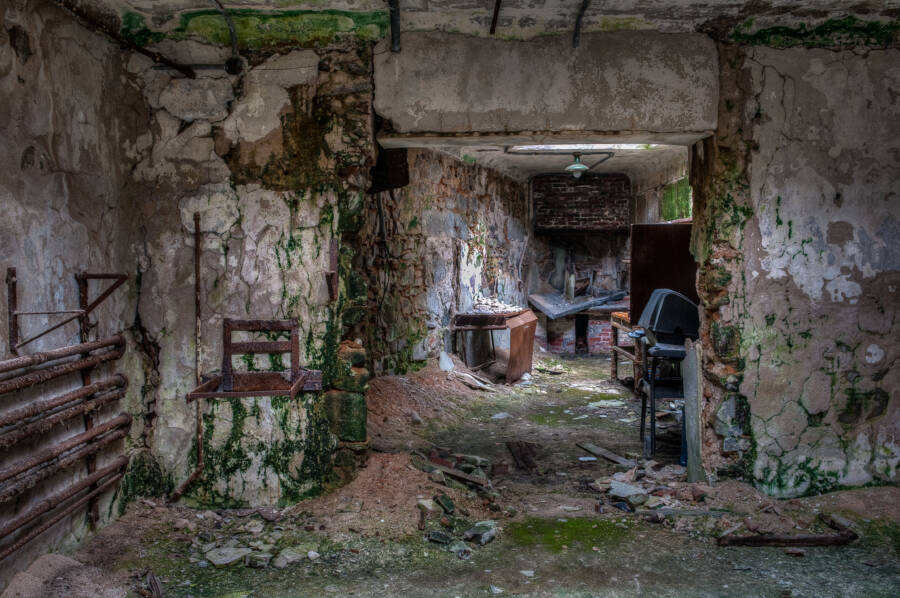
jpstjohn/FlickrNature taking over the former rec room of Eastern State Penitentiary.
The prison faced a series of riots throughout its operation. In 1933, inmates rioted due to overcrowding and set fire to their cells.
Following a 1961 prison riot that took hours to quell, the state of Pennsylvania began to consider closing down Eastern State Penitentiary.
For one thing, the Penitentiary was initially built on farmland, but by this time, Philadelphia had expanded so that middle-class homes surrounded the prison. Between the riots and the prison's deterioration itself, the safety of the neighborhood was at stake.
The prison was officially closed in 1970 and its inmates moved to surrounding facilities. Then it stood untouched for over 20 years and slowly deteriorated to near-ruin.
Today, the Eastern State Penitentiary functions as part-ruin and part-museum with interactive and online tours available. Some parts of the prison have been and will continue to be restored, but there are no plans to restore the entire building.
Visitors can wander through the halls of the huge prison and witness the decay for themselves. And because of the stories of torture and madness, the prison was listed on TIME magazine's list of horrifying haunts.
Cellblock 12 is allegedly known for its cackling echoes and Cellblock 6 is said to feature darting, shadowy figures. The museum itself, however, doesn't actually claim the prison is haunted, even though it runs a haunted attraction.
Tour guide Ben Bookman told NPR that: "Most people making TV shows come in looking for ghosts. That's not the story we tell. Inmates were real people. These were people's lives. Seventy-thousand people spent time here. We're not going to glorify it, and we're not going to make fun of it."
Next, read about Danvers State Hospital and discover why it's ranked among the most infamous asylums. Then, check out the Brazen Bull, which is quite possibly history's worst torture device.
